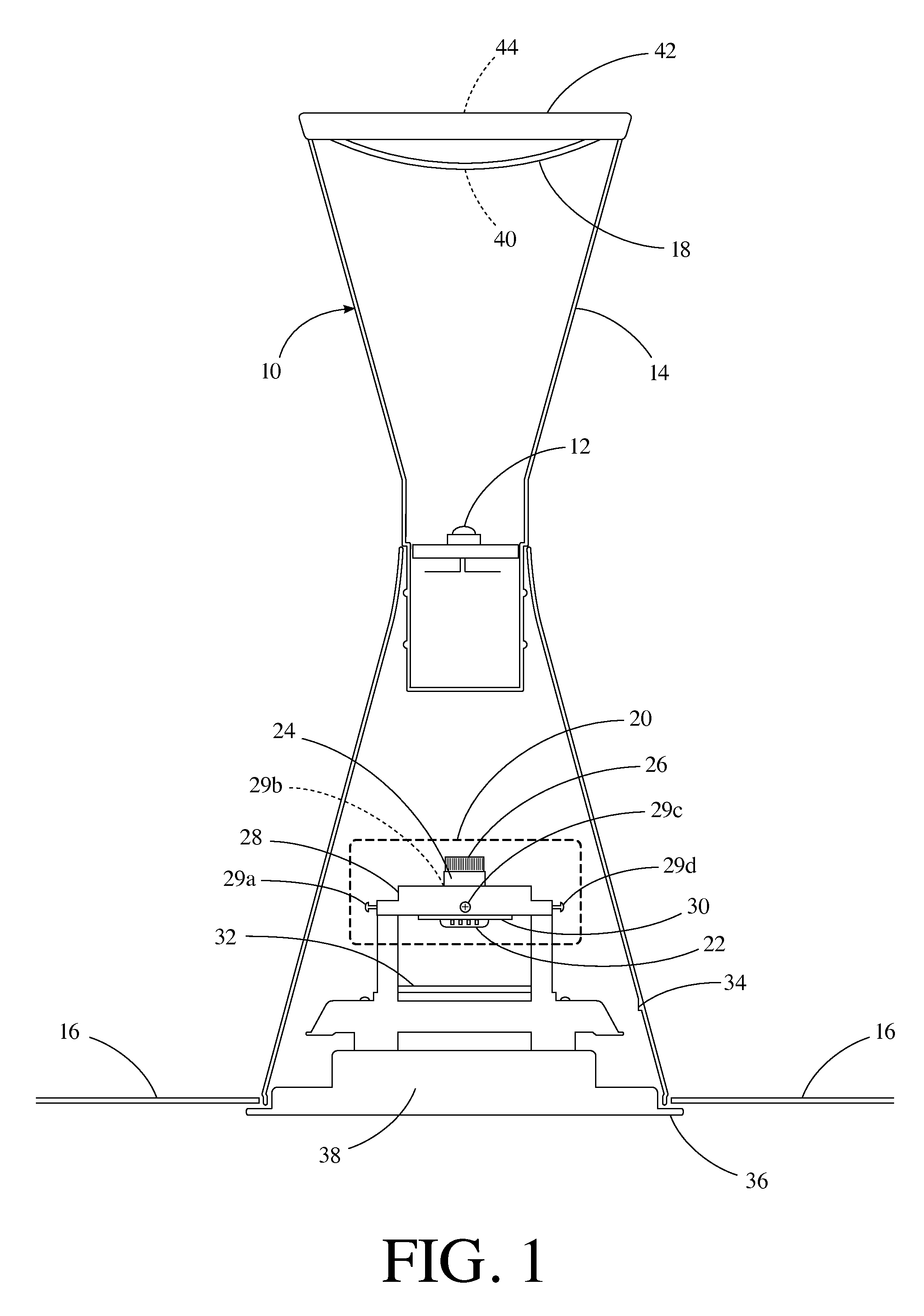Game tower
a game and tower technology, applied in the field of board games, can solve the problems of reducing the potential predictability of algorithmic play inherent in the downloadable games, the calibration of the television camera, and the tedious and time-consuming process, so as to avoid questions and confusion about the rules of the game, facilitate the operation, and minimize extraneous effects
- Summary
- Abstract
- Description
- Claims
- Application Information
AI Technical Summary
Benefits of technology
Problems solved by technology
Method used
Image
Examples
Embodiment Construction
[0039]The described embodiments reveal a game apparatus and a method for playing games. The game apparatus is a game tower that comprises a light source, a convex mirror and an optical sensor, which may be a camera, all disposed within a housing. The housing is transparent to the range of wavelengths from the light source and is composed of a low distortion scratch-resistant material. The apparatus further comprises a game board and one or more retro-reflective elements, such as a moveable playing marker or game token, a card or a region affixed to and integrated into the game board. A data store is used for storing the locations of the reflective elements and other game-related data, such as data needed to measure a player's score or position in a game or data to provide guided play. The data store may be divided into a first data store for storing the locations of the reflective elements and other game-related data used during game play and a second data store for storing one or m...
PUM
 Login to View More
Login to View More Abstract
Description
Claims
Application Information
 Login to View More
Login to View More - R&D
- Intellectual Property
- Life Sciences
- Materials
- Tech Scout
- Unparalleled Data Quality
- Higher Quality Content
- 60% Fewer Hallucinations
Browse by: Latest US Patents, China's latest patents, Technical Efficacy Thesaurus, Application Domain, Technology Topic, Popular Technical Reports.
© 2025 PatSnap. All rights reserved.Legal|Privacy policy|Modern Slavery Act Transparency Statement|Sitemap|About US| Contact US: help@patsnap.com



